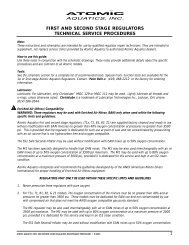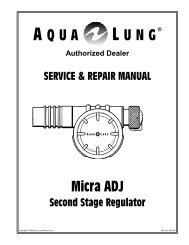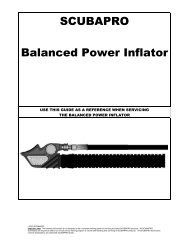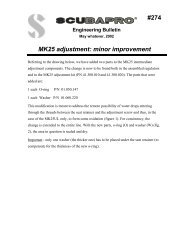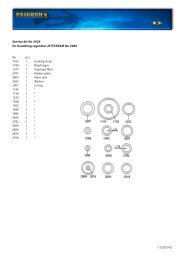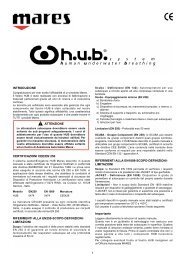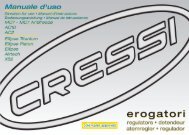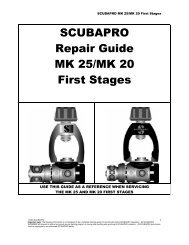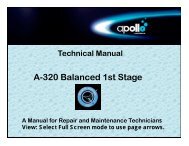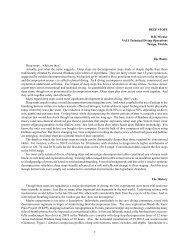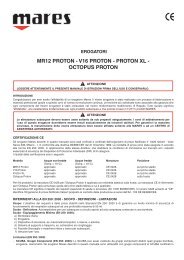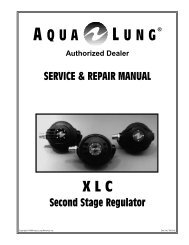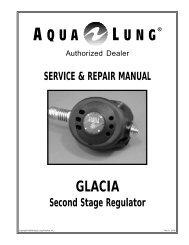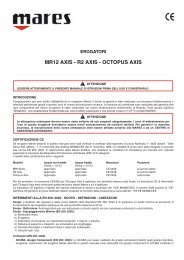Service & Repair Manual - Frogkick.dk
Service & Repair Manual - Frogkick.dk
Service & Repair Manual - Frogkick.dk
Create successful ePaper yourself
Turn your PDF publications into a flip-book with our unique Google optimized e-Paper software.
<strong>Service</strong> & <strong>Repair</strong> <strong>Manual</strong><br />
the orifice head. Discard the O-ring and do not reuse.<br />
19. Closely examine the orifice with the use of a magnifier, checking<br />
for any scratches or other damage to the sealing edge and<br />
the groove that holds the O-ring (see Fig. 14). If any damage or<br />
wear is found, discard the orifice and do not attempt to reuse. If<br />
it is in reusable condition, set it aside on a soft surface to keep it<br />
isolated from other metal parts.<br />
20. Remove the exhaust deflector(24) from the second stage housing<br />
to expose the exhaust valve(22) for inspection.<br />
NOTE: To facillitate the removal of the exhaust deflector,<br />
first place it in hot (120°-150°F) water for 2-3 minutes and<br />
allow it to soften.<br />
Fig. 13 – Removal of Adjustable Orifice<br />
21. Closely inspect the exhaust deflector to check for any signs of<br />
damage that may have been caused by abuse or improper disassembly.<br />
If found, discard it and replace with new.<br />
22. Closely inspect the condition of the exhaust valve to ensure that<br />
it is evenly seated against the second stage housing on all sides,<br />
and free of any tears, holes, or other signs of decay. Peel back<br />
the lip on all sides to ensure it is supple and returns to its original<br />
position. If any wear or damage is detected, or if the material<br />
feels stiff or decayed, pull the exhaust valve straight out of<br />
the housing and discard it.<br />
NOTE: It is not necessary to remove the exhaust valve<br />
diaphragm unless it shows signs of wear or decay upon inspection.<br />
Once the diaphragm is removed, however, it will be<br />
permanently stretched and then must be replaced with new.<br />
▼ After completing the disassembly of the first and<br />
second stages, refer to the instructions provided in<br />
the XS Scuba Authorized <strong>Service</strong> Document, titled -<br />
Regulator Parts Cleaning Procedures.<br />
Fig. 14 – Orifice Inspection<br />
15 Copyright ©2011 XS Scuba



